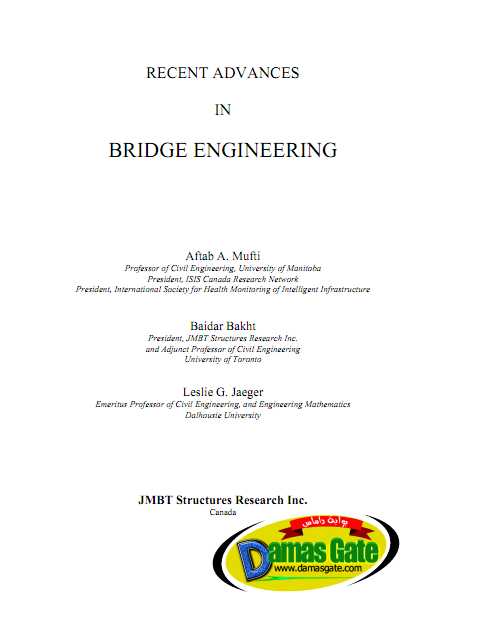Recent Advances in Bridge Engineering
1.1 INTRODUCTION Although not generally appreciated by lay people, it is not possible to design and construct a structure that will remain safe against failure under all conditions and at all times.
The reasons for a structure being prone to failures are several: (a) the strength of the various components cannot be assessed with full certainty; (b) the loads that a structure will be called upon to sustain also cannot be predicted with certainty; and (c) the condition of a structure may deteriorate with time due to the effects of the environment, causing it to lose strength. Because of these factors, there exists a probability that the strength of a structure will at some time be exceeded by the loads that it has to sustain, resulting in the failure of the structure. As noted in subsection 1.3.2, the term failure is

being used here not only to signify the collapse of the whole structure, but also to include
the situation of the structure not being able to fulfil one or more of its intended functions.
The probability of failure of a structure can be reduced by increasing its design strength, which invariably leads to a higher first cost. The role of the structural engineer is to strike a socially acceptable balance between the risk of failure and the cost of the structure. For example, a bridge can indeed be built to have the same probability of failure as the pyramids of Giza, shown in Fig. 1.1. The cost of such a bridge, however, is likely to be so high that society may not be prepared to pay for it. By contrast, society may not be prepared to accept in a bridge the same high frequency of failure as in an automobile.
Download
*